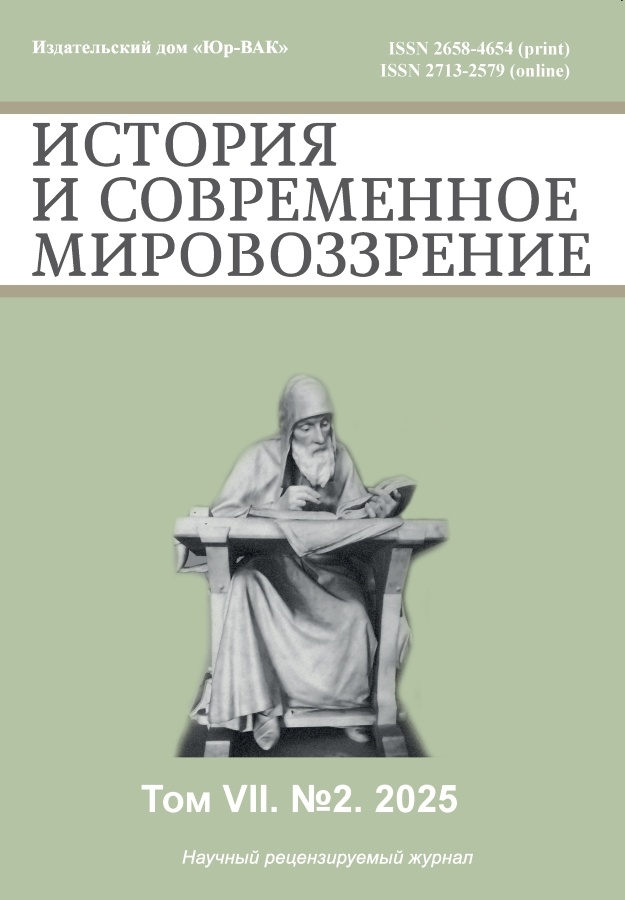The Urban Population of the Chelyabinsk Region According to the Materials of the All-Union Census of 1959
- 作者: Zhuravleva V.A.1, Miroshnichenko M.I.2, Paletskikh N.P.3
-
隶属关系:
- The branch of South Ural State University
- South Ural State University
- South Ural State Agrarian University
- 期: 卷 7, 编号 2 (2025)
- 页面: 54-60
- 栏目: ECONOMIC HISTORY
- URL: https://journals.eco-vector.com/2658-4654/article/view/688815
- DOI: https://doi.org/10.33693/2658-4654-2025-7-2-54-60
- EDN: https://elibrary.ru/WIMLNI
- ID: 688815
如何引用文章
详细
Based on the materials of the All-Union censuses of 1939 and 1959, the article attempts to trace the dynamics in the development of the urban settlement network and the urban population of the Chelyabinsk region, to determine the specifics of the ongoing urbanization of the region. In the course of the study, the authors concluded that due to the evacuation of enterprises and workers during the Great Patriotic War, the Chelyabinsk Region maintained high rates of urban population growth and by the end of the 1950s, the degree of urbanization was equal to the Sverdlovsk region — the proportion of citizens rose to 76%. The urban settlement network grew primarily due to cities, 91.5% of the urban population of the region lived in them, the majority of urbanized residents of the Chelyabinsk Region (69.5%) were concentrated in medium and large cities. The study of the sex and age structure of the urban population allowed us to draw the following conclusions. First, the 1959 census revealed an increased gender imbalance in favor of women, but among people aged 0 to 24, there was an overweight of men. Secondly, there were age disparities, and there are three demographic pits. The Great Patriotic War played a special role in the sharp decline in the number of citizens aged 10-19 and 35-44. Thirdly, the urban population of the region remained young: people under the age of 30 accounted for over 59%, pensioners — 6.1%. The share of able-bodied citizens (61.4%) made it possible to solve the economic problems facing the region.
全文:
作者简介
Vera Zhuravleva
The branch of South Ural State University
编辑信件的主要联系方式.
Email: zhuravlvera@yandex.ru
ORCID iD: 0000-0002-1915-913X
SPIN 代码: 7895-4970
Dr. Sci. (Hist.), Associate Professor, Professor of Department of Socio-Legal Sciences and Humanities
俄罗斯联邦, ZlatoustMaria Miroshnichenko
South Ural State University
Email: mmi74@yandex.ru
ORCID iD: 0000-0003-0545-2359
SPIN 代码: 7676-4378
Dr. Sci. (Hist.), Associate Professor, Professor of Department of Russian and foreign history
俄罗斯联邦, ChelyabinskNadezhda Paletskikh
South Ural State Agrarian University
Email: palenad@mail.ru
ORCID iD: 0000-0001-5073-7914
SPIN 代码: 9434-9964
Dr. Sci. (Hist.), Associate Professor, Professor of Department of Social Sciences, Humanities and Russian as a Foreign Language
俄罗斯联邦, Chelyabinsk参考
- Andreyev E.M., Darskiy L.E., Khar'kova T.L. The population of the Soviet Union: 1922-1991. Moscow: Nauka, 145 p.
- Andreyev E.M., Darskiy L.E., Khar'kova T.L. Demographic history of Russia: 1927-1959. Moscow: Informatika Publ., 1998. 187 p.
- Vishnevskiy A.G. Sickle and ruble. Conservative modernization in the USSR. Moscow: OGI Publ., 1998. 432 p.
- Gorbachev O.V. Cities of the Middle Urals in the XX century: population dynamics and development factors // Stability of demographic development: determinants and resources: collection of scientific articles — Yekaterinburg: IE Ural Branch of the Russian Academy of Sciences, 2024. pp. 41–51.
- Zhiromskaya V.B. Main trends of demographic development of Russia in the XX century. Moscow: Kuchkovo Pole, 2012. 320 p.
- Zhiromskaya V.B. The life potential of post-war generations in Russia: historical and demographic aspect: 1946-1960. Moscow: Direct-Media, 2020. 2nd ed. 310 p.
- Zhuravleva V.A. Urban population of the Urals in the 1920s and 1930s. Chelyabinsk: Publishing House. SUSU Center, 2012. 219 p.
- Isupov V.A. Urban population of Siberia: From disaster to rebirth (late 30s — late 50s). Novosibirsk: Nauka. Siberian Branch, 1991. 291 p.
- Isupov V.A. Demographic catastrophes and crises in Russia in the first half of the 20th century: historical and demographic essays. Novosibirsk: Siberian Chronograph, 2000. 244 p.
- Kozlov V.I. Dynamics of the USSR population (General ethnodemographic review) // History of the USSR, 1991. No. 5, pp. 3–17.
- Kornilov G.E. Urbanization in the Urals in the XX century: demographic consequences // Demographic factors of population adaptation to global socio-economic challenges: collection of scientific articles. Yekaterinburg: IE Ural Branch of the Russian Academy of Sciences, 2023. pp. 63–76.
- Kuz'min A.I., Orudzhiyeva A.G. Historical and demographic portrait of Yekaterinberg // Proceedings of the Ural State University. 1998. No. 9. pp. 95–100.
- Mazur L.N. Khar'kova V.M. Socio-demographic profile of Sverdlovsk (passport of the city of 1959) // Stability of demographic development: determinants and resources: collection of scientific articles. Yekaterinburg: IE UrO RAS, 2024. pp. 122–132.
- Mokerov I.P. Chelyabinsk region in the mirror of demography: a preprint. Sverdlovsk: B.I. Publ., 1991. 60 p.
补充文件








